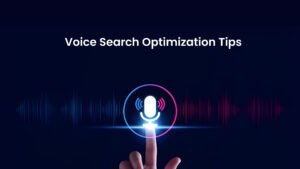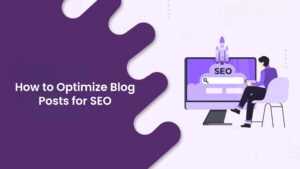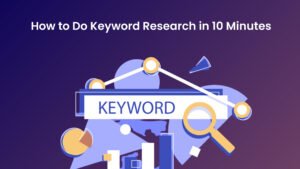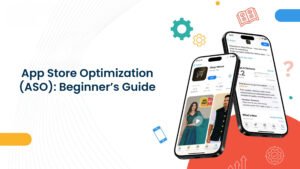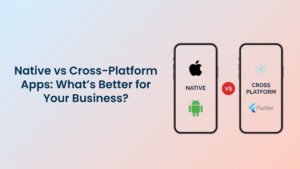Introduction
Content is no longer just a marketing asset in 2025. It has become the lifeblood of business growth, brand authority, and customer trust. Decision-makers today are under constant pressure to deliver high-quality, consistent content across websites, social media, email campaigns, and even internal communications. The problem is that traditional content production methods are too slow and too expensive to keep up with the pace of digital demand.
This is where AI content tools have taken center stage. The best AI content software now allows businesses to create blogs, articles, reports, videos, and even full-scale campaigns with speed and precision. Leaders who once relied only on large creative teams are now discovering that AI writing tools, AI video creation software, and all-in-one AI content generator platforms are changing the way content is produced and consumed.
For business leaders, this shift is not just about saving time. It is about staying competitive in a digital environment where customer attention is scarce. The companies that adopt the right mix of AI content software in 2025 are building stronger engagement, reaching wider audiences, and achieving measurable ROI in ways that were not possible just a few years ago.
What this really means for executives and entrepreneurs is simple. If your organization is not exploring the best AI content tools available, you risk falling behind competitors who are scaling faster and connecting with customers more effectively. This blog will guide you through the most impactful tools on the market, explain how they are being used by businesses globally, and provide clear strategies to help you evaluate which solutions are right for your company.
The Content Creation Challenge in 2025
Every leader knows that content has become the voice of business. In 2025, the demand for content is not just about volume, it is about consistency, personalization, and speed. Customers expect meaningful interaction on multiple platforms, and businesses are under pressure to deliver it without delay.
The challenge is clear. Traditional content creation models struggle to match the scale required today. Producing a single blog, social post, or video can take days or weeks when handled manually. Multiply that by the dozens of channels businesses need to maintain, and the workload quickly becomes unmanageable. This is one of the main reasons companies are turning to AI content tools.
The risk of ignoring this shift is significant. Competitors who adopt the best AI content software are not only producing more content, they are also delivering higher relevance. AI writing tools are helping brands publish blogs that resonate with niche audiences, while AI video creation tools are enabling teams to push out product explainers, social ads, and training modules in hours instead of weeks. Leaders who delay adoption risk watching their market share erode as faster, more agile players step ahead.
Yet, there is another side to the challenge. While automation solves the issue of scale, businesses must also balance it with human creativity. AI content generator platforms can produce articles, visuals, and scripts, but without a strategic layer of human direction, content can feel generic. Decision-makers need to recognize that AI is not a replacement for creative thinking, but a force multiplier. The organizations that will win in 2025 are the ones that combine the efficiency of AI content software with the vision and insights of human leadership.
In short, the content creation challenge in 2025 is not just about producing more. It is about producing smarter, faster, and in ways that connect directly with the audience. This is exactly where the best AI content tools are becoming indispensable.
What Makes the Best AI Content Software Stand Out
With dozens of options available in the market, leaders often face the challenge of separating hype from real value. Not every AI content tool delivers the quality or scalability that businesses need. The difference between an average tool and the best AI content software comes down to how well it supports both strategic and day-to-day content needs.
Core Features Decision-Makers Should Prioritize
-
Accuracy and Contextual Relevance
AI content tools must go beyond producing grammatically correct sentences. They should understand tone, brand voice, and context. For instance, a financial report and a lifestyle blog demand very different language styles. -
Multi-format Support
In 2025, businesses need more than text. The best AI writing tools are paired with AI video creation and design automation capabilities. Leaders should look for platforms that can generate blog posts, ad copies, scripts, and visuals without requiring multiple disconnected apps. -
Ease of Integration
The best AI content software should fit seamlessly into existing workflows. Whether a company uses HubSpot, WordPress, or a custom CMS, integration matters. Tools that require extensive re-training or heavy technical support often slow down adoption. -
Scalability and Cost Efficiency
Startups and large enterprises both need scalable solutions. Pricing flexibility and the ability to handle growing content volumes without losing quality is a key differentiator. -
ROI and Performance Tracking
Leadership needs to see measurable returns. Tools that come with in-depth analytics, such as engagement rates, conversion impact, and cost savings, make it easier to justify investments.
Data Snapshot: Why Leaders Invest in AI Content Tools
To understand what sets the best AI content software apart, let’s look at real adoption trends reported by global businesses between 2022 and 2025.
| Year | Global Adoption of AI Content Tools (%) | Average Cost Savings in Content Production (%) | Reported Increase in Engagement (%) |
|---|---|---|---|
| 2022 | 23 | 12 | 8 |
| 2023 | 36 | 18 | 14 |
| 2024 | 54 | 25 | 22 |
| 2025 | 71 | 32 | 31 |
Interpretation: By 2025, more than 70 percent of businesses worldwide are actively using AI writing tools, AI video creation platforms, or AI content generator solutions. On average, they are cutting content production costs by nearly one-third while improving engagement by over 30 percent. This demonstrates why evaluating the right software is no longer optional, it is essential for maintaining competitiveness.
What this data shows is clear. Businesses that choose the best AI content software are not only saving money but also achieving higher impact with the same resources. For leaders, the decision is not whether to adopt AI content tools, but which platform aligns best with their growth strategy.
Categories of AI Content Tools in 2025
The landscape of AI content software is broad, and not all tools serve the same purpose. For leaders, understanding the categories helps in choosing the right mix for their organization. In 2025, the most impactful solutions can be grouped into three categories: AI writing tools, AI video creation software, and AI content generator platforms.
AI Writing Tools
AI writing tools are the foundation of modern content strategies. They assist businesses in producing blogs, newsletters, reports, and even website copy at scale. Unlike earlier versions that often produced robotic text, today’s tools understand brand tone, structure, and context.
Where they excel:
-
Drafting long-form content like articles and whitepapers
-
Creating marketing copy such as product descriptions and email campaigns
-
Speeding up the research and outlining process
Mini Case Study:
A mid-sized SaaS company in Europe adopted an AI writing tool to support its small marketing team. Before adoption, the team produced around 12 blogs per month. With AI assistance, they scaled output to 28 blogs per month without hiring additional writers. The company saw a 40 percent increase in organic search traffic within six months.
AI Video Creation Tools
Video is the most consumed form of content in 2025, and businesses can no longer ignore it. Traditional video production involves high costs, specialized teams, and long timelines. AI video creation tools are breaking these barriers by allowing teams to generate professional videos in hours.
Where they excel:
-
Producing explainer videos for product launches
-
Generating social media ads in multiple languages
-
Creating training and onboarding modules for employees
Mini Case Study:
A global retail company introduced AI video creation software to handle staff training across 12 countries. Instead of spending over $250,000 annually on outsourced training videos, they cut costs to $70,000 while also reducing production time from weeks to two days. The leadership team reported higher employee engagement due to localized and on-demand training content.
AI Content Generator Platforms
While writing tools and video solutions solve specific needs, many leaders prefer all-in-one AI content generator platforms. These platforms combine text, visuals, and automation into a single dashboard. They allow companies to ideate, draft, design, and publish across multiple channels without juggling multiple apps.
Where they excel:
-
Creating integrated campaigns that include blogs, videos, and social posts
-
Centralizing brand guidelines for consistent messaging
-
Automating repetitive content production tasks
Mini Case Study:
A startup in India with limited staff adopted an AI content generator platform to compete with established competitors. By automating content scheduling and generation, they managed to produce 3x more social posts, double their email campaigns, and generate a 55 percent increase in customer signups in just four months.
Summary for Leaders:
Each category of AI content tools plays a different role. AI writing tools bring scale to text creation, AI video creation software opens up new engagement channels, and AI content generator platforms help manage everything under one roof. Choosing the right mix depends on business priorities, but leaders who combine these categories strategically will be ahead of the curve in 2025.
Top AI Content Tools to Consider in 2025
With the rapid evolution of artificial intelligence, the number of available tools can feel overwhelming. The key for leaders is not to look for the tool with the most features, but the one that aligns with business goals, integrates into existing workflows, and delivers measurable ROI. Below is a breakdown of the best AI content software across writing, video, and all-in-one generator platforms in 2025.
Best AI Writing Tools for Business Leaders
1. Jasper AI
Jasper remains one of the most reliable AI writing tools. Known for its natural tone and versatility, it is widely used by marketing teams, entrepreneurs, and enterprises.
-
Strengths: Produces high-quality blogs, ads, and email campaigns. Comes with templates for multiple industries.
-
Use cases: Scaling blog content, creating persuasive ad copy, improving SEO performance.
2. Copy AI
Copy AI has gained popularity among startups and small businesses thanks to its user-friendly interface and cost-effective pricing.
-
Strengths: Excellent at generating product descriptions, social media posts, and quick marketing drafts.
-
Use cases: Small teams needing fast turnarounds, eCommerce businesses, solopreneurs.
3. Writesonic
Writesonic positions itself as a balance between affordability and enterprise-level capabilities.
-
Strengths: Offers multilingual support, AI image generation, and integrations with WordPress and Shopify.
-
Use cases: Global businesses, eCommerce brands, companies targeting diverse audiences.
Best AI Video Creation Software
1. Synthesia
Synthesia has become the go-to solution for professional AI-generated videos. It allows businesses to create videos with realistic avatars and voiceovers in multiple languages.
-
Strengths: High production quality, scalable, perfect for training and marketing.
-
Use cases: Global employee onboarding, corporate presentations, personalized video campaigns.
2. Pictory AI
Pictory focuses on turning existing long-form content, such as blogs or webinars, into short, engaging videos for social media.
-
Strengths: Easy to repurpose existing material, good for marketers who want fast results.
-
Use cases: Social media marketing, lead generation, brand storytelling.
3. Runway Gen-2
Runway’s Gen-2 technology brings advanced AI-powered video creation and editing into one platform. It is especially popular among creative teams.
-
Strengths: Generates cinematic-quality visuals, offers advanced editing features.
-
Use cases: Advertising campaigns, product launches, visual storytelling.
Best AI Content Generator Platforms
1. HubSpot AI Content Assistant
HubSpot has integrated AI into its already strong CRM and marketing ecosystem, making it a natural choice for businesses seeking an all-in-one solution.
-
Strengths: Combines AI writing, scheduling, and performance tracking within the HubSpot suite.
-
Use cases: Companies already using HubSpot for marketing automation and CRM.
2. CopySmith
CopySmith positions itself as an AI platform for large-scale eCommerce operations.
-
Strengths: Bulk content creation, integration with eCommerce platforms, and collaborative features for teams.
-
Use cases: Online retailers, brands with large product catalogs.
3. Content at Scale
Content at Scale is designed for businesses that need long-form, SEO-focused content. It has gained traction with publishers and marketing agencies.
-
Strengths: Creates detailed articles optimized for search engines, includes plagiarism checks.
-
Use cases: Agencies, publishers, businesses prioritizing organic search growth.
Quick Comparison Table for Leaders
| Category | Tool | Best For | Key Strength |
|---|---|---|---|
| AI Writing Tools | Jasper AI | Enterprises and agencies | High-quality, versatile content creation |
| AI Writing Tools | Copy AI | Startups and small businesses | Fast and affordable content generation |
| AI Writing Tools | Writesonic | Global eCommerce brands | Multilingual support and integrations |
| AI Video Creation | Synthesia | Corporates and training | Realistic avatars, multilingual video |
| AI Video Creation | Pictory | Social media marketers | Converts blogs/webinars into videos |
| AI Video Creation | Runway Gen-2 | Creative campaigns | Cinematic visuals and advanced editing |
| AI Content Generator | HubSpot AI Assistant | HubSpot ecosystem users | Integrated CRM + content creation |
| AI Content Generator | CopySmith | eCommerce companies | Bulk content and team collaboration |
| AI Content Generator | Content at Scale | Agencies and publishers | SEO-driven long-form content |
Takeaway for Leaders:
The best AI content software is not a one-size-fits-all solution. A mid-sized eCommerce company may find Copy AI and Pictory more valuable, while an enterprise may prefer Jasper, Synthesia, and HubSpot AI Assistant for a fully integrated approach. The right choice depends on your business size, goals, and available resources.
Data and Insights on AI Content Adoption
The adoption of AI content tools has moved beyond experimentation. By 2025, they have become part of core business strategies. Leaders want to know not just if these tools work, but how much impact they deliver on cost, efficiency, and audience engagement. The data speaks clearly.
Growth of AI Content Adoption from 2022 to 2025
| Year | Percentage of Businesses Using AI Content Tools | Primary Use Cases |
|---|---|---|
| 2022 | 23% | Blog writing, basic copy generation |
| 2023 | 36% | SEO optimization, social media content |
| 2024 | 54% | Video creation, email campaigns, scaling content |
| 2025 | 71% | Integrated campaigns, multilingual content, enterprise workflows |
Interpretation: Adoption has more than tripled in just three years. By 2025, nearly three out of four companies are actively using AI writing tools, AI video creation platforms, or AI content generator solutions as part of their content strategy.
ROI Impact of Best AI Content Software
| Business Size | Average Annual Content Budget (Traditional) | Average Budget Using AI Content Tools | Savings (%) | Average Engagement Increase |
|---|---|---|---|---|
| Small Business | $120,000 | $82,000 | 32% | 22% |
| Mid-Sized Company | $450,000 | $305,000 | 32% | 28% |
| Enterprise | $2.1 Million | $1.38 Million | 34% | 31% |
Interpretation: Across company sizes, the savings range from 30 to 35 percent, while engagement increases between 22 and 31 percent. This shows that the best AI content software not only reduces costs but also amplifies results.
Productivity Gains with AI Writing Tools and AI Video Creation
| Content Type | Average Time to Produce (Traditional) | Average Time with AI Tools | Time Saved |
|---|---|---|---|
| Blog Article (1500 words) | 10 hours | 2.5 hours | 75% |
| Product Video (2 min) | 40 hours | 6 hours | 85% |
| Social Media Campaign (5 posts) | 8 hours | 2 hours | 75% |
Interpretation: By 2025, AI content tools are reducing production time dramatically. For example, what once took 40 hours to create a polished video, can now be completed in a single workday with AI video creation platforms.
What This Means for Leaders
The numbers make the case crystal clear. Businesses using the best AI content tools are spending less, producing faster, and reaching audiences more effectively. For decision-makers, the opportunity is not just cost reduction but the ability to redirect saved time and resources into higher-value strategic initiatives.
How to Choose the Right AI Content Tools for Your Business
With so many options available, selecting the right AI content software can be overwhelming. The best tools for one company may not fit another’s needs. In 2025, leaders are looking for platforms that balance scalability, integration, and measurable results.
Here’s a structured approach to make the decision process clear and actionable.
Step 1: Define Your Business Goals
Before evaluating any platform, clarify what you need AI content tools to achieve. Examples include:
-
Reducing content production costs by 30 percent
-
Increasing blog output while maintaining quality
-
Producing multilingual content for global audiences
-
Generating video and social content at scale
-
Centralizing all content creation in one platform
A clear understanding of your goals ensures you choose tools that deliver real business impact rather than flashy features.
Step 2: Evaluate Features and Capabilities
Not all AI content tools are created equal. Use the following checklist to assess whether a platform meets your needs:
Feature Checklist for Decision-Makers:
-
Accuracy in writing and contextual relevance
-
Multi-format support: blogs, video, social media, email
-
Integration with existing CMS, CRM, and marketing platforms
-
Scalability to match growing content demands
-
Analytics and performance tracking capabilities
-
Collaboration tools for teams
-
Language support if targeting international markets
Step 3: Consider Total Cost of Ownership
AI tools often come with subscription fees, integration costs, and training requirements. Leadership should calculate the total cost and compare it with projected savings. In many cases, investing in a higher-quality platform pays off through efficiency gains and higher engagement.
Step 4: Assess Vendor Support and Reliability
Even the best AI writing tools can fall short if the vendor does not offer:
-
Timely customer support
-
Regular updates and feature enhancements
-
Strong security and data privacy practices
Reliable vendor support ensures that adoption is smooth and disruptions are minimized.
Step 5: Run a Pilot Program
Instead of committing company-wide immediately, start with a pilot program:
-
Select 1–2 key teams to use the AI tools for 30–60 days
-
Measure content output, quality, engagement, and efficiency gains
-
Gather feedback from users and stakeholders
-
Make an informed decision before full-scale adoption
Step 6: Avoid Common Pitfalls
-
Selecting a tool purely because it is popular
-
Ignoring integration and workflow compatibility
-
Expecting AI to replace human creativity entirely
-
Neglecting ongoing training and governance
Leadership Decision Framework
| Factor | Key Questions | Priority Level |
|---|---|---|
| Content Goals | Does the tool align with strategic content objectives? | High |
| Integration | Can it seamlessly connect with CMS, CRM, or marketing platforms? | High |
| Scalability | Will it handle increasing content demands over the next 3–5 years? | High |
| Cost | Does total cost align with projected ROI? | Medium |
| Analytics | Does it provide actionable insights to measure performance? | Medium |
| Vendor Reliability | Is support responsive and are updates regular? | High |
Interpretation: Using this framework, leaders can objectively compare AI content tools based on business priorities rather than marketing hype.
Case Studies: Real Business Scenarios
Seeing AI content tools in action helps leaders understand their real-world impact. Here are three detailed case studies showcasing how businesses have leveraged AI writing tools, AI video creation, and AI content generator platforms to drive growth, efficiency, and engagement.
Case Study 1: Mid-Sized eCommerce Brand Scaling with AI Writing Tools
Company Background:
A mid-sized eCommerce brand in Europe, selling home and lifestyle products, had a small marketing team producing 12 blog posts per month. Their goal was to improve SEO performance and scale content output without increasing headcount.
Challenge:
-
Limited content output was slowing organic traffic growth
-
Manual writing was time-consuming and inconsistent in quality
-
High production costs were impacting ROI
Solution:
The brand adopted Jasper AI to assist the marketing team in drafting blogs, product descriptions, and email campaigns. The team used the AI tool for research, outlining, and first drafts, while final editing and brand alignment were handled by human writers.
Results:
-
Blog output increased from 12 to 28 posts per month
-
Organic traffic grew by 40 percent in six months
-
Content production costs reduced by 30 percent
-
Team morale improved as repetitive tasks were automated
Key Insight for Leaders:
AI writing tools can multiply output while maintaining quality, allowing teams to focus on strategy rather than repetitive content creation.
Case Study 2: Enterprise Using AI Video Creation for Training and Branding
Company Background:
A global retail enterprise with 12,000 employees across 10 countries faced high costs and long timelines in producing training videos and internal communications.
Challenge:
-
Outsourcing video production cost over $250,000 annually
-
Video creation took weeks, delaying rollout of essential content
-
Employees reported low engagement due to delayed and generic content
Solution:
The company implemented Synthesia to produce localized training videos and internal updates. AI avatars, voiceovers in multiple languages, and customizable templates enabled the team to create content quickly and consistently.
Results:
-
Production time for a 2-minute video dropped from 40 hours to 6 hours
-
Annual video production costs reduced from $250,000 to $70,000
-
Employee engagement with training videos increased by 38 percent
-
Localization allowed for consistent messaging across regions
Key Insight for Leaders:
AI video creation software can drastically reduce costs and time while improving engagement, especially in global organizations.
Case Study 3: Startup Leveraging AI Content Generator to Compete with Larger Players
Company Background:
A startup in India offering subscription-based educational content faced strong competition from well-funded competitors with large marketing teams.
Challenge:
-
Limited staff could not produce sufficient content to compete
-
Social media and email campaigns were inconsistent
-
High-pressure to scale brand visibility quickly
Solution:
The startup adopted an all-in-one AI content generator platform, which combined blog writing, social media posts, and email campaign creation in one tool. Automated scheduling and workflow integration allowed the small team to manage multiple channels efficiently.
Results:
-
Content output tripled within four months
-
Social media engagement doubled
-
Email campaign open rates increased by 25 percent
-
Customer signups rose by 55 percent without adding staff
Key Insight for Leaders:
All-in-one AI content generator platforms enable startups and small teams to compete with larger players by automating scale and consistency.
Summary for Leaders:
These case studies show that AI content tools are not just theoretical solutions. They drive measurable results across industries and company sizes. Whether scaling blogs, producing videos at speed, or running integrated campaigns, businesses that adopt the right tools gain a significant competitive advantage.
The Future of AI Content Tools Beyond 2025
AI content tools have already transformed the way businesses create and distribute content. However, the evolution is far from over. Looking beyond 2025, leaders need to prepare for new trends that will further redefine content strategy, audience engagement, and operational efficiency.
Trend 1: Multimodal AI Content Creation
The next generation of AI content tools will seamlessly combine text, video, audio, and interactive visuals in one platform. Businesses will be able to produce:
-
Blog posts with embedded AI-generated videos
-
Interactive product demos with dynamic copy
-
Personalized emails that adapt content automatically based on user behavior
This multimodal approach allows companies to engage audiences across multiple formats without multiplying workloads. Early adopters will have a distinct advantage in brand reach and engagement.
Trend 2: Hyper-Personalization
By leveraging AI-driven insights, content will become increasingly personalized at scale. This goes beyond simply inserting a customer’s name into an email. Future AI tools will:
-
Tailor messaging based on user behavior, location, and preferences
-
Suggest content formats optimized for engagement per user segment
-
Dynamically adjust content tone based on audience sentiment
For decision-makers, hyper-personalization means higher conversion rates and stronger customer relationships without requiring additional human resources.
Trend 3: Integration with AI-Powered Marketing Analytics
Content creation will no longer exist in isolation. AI tools will integrate deeply with analytics platforms, providing:
-
Real-time performance feedback
-
Recommendations for content optimization based on engagement metrics
-
Predictive insights for what type of content will resonate next
Businesses will be able to iterate faster and reduce the trial-and-error approach that currently slows content strategies.
Trend 4: AI-Driven Collaboration and Workflow Automation
The tools of the future will act as collaborative partners, not just content generators. Features will include:
-
Automated project management within content platforms
-
AI suggestions for workflow improvements and resource allocation
-
Team collaboration with real-time AI guidance on content alignment with strategy
This will allow organizations to scale content production while maintaining strategic oversight and quality control.
Trend 5: Ethical and Responsible AI Content Practices
As AI content tools become more sophisticated, leaders will also need to focus on ethical use:
-
Ensuring transparency when AI generates content
-
Avoiding plagiarism and maintaining originality
-
Balancing automation with human creativity to preserve brand authenticity
Companies that adopt ethical guidelines early will build trust with customers and avoid reputational risks.
Conclusion and Business Call to Action
The landscape of content creation in 2025 is no longer just about producing words or videos. It is about delivering value at scale, engaging audiences across multiple platforms, and doing so efficiently without compromising quality. The adoption of AI content tools, including AI writing tools, AI video creation, and AI content generator platforms, has proven to be a game-changer for businesses of all sizes.
Through case studies, data insights, and real-world examples, it is clear that the best AI content software helps companies:
-
Increase content output and efficiency
-
Reduce production costs by 30 to 35 percent
-
Enhance engagement and customer interaction
-
Maintain consistent brand messaging across formats
For decision-makers, the key takeaway is simple: AI is no longer optional—it is essential. However, success depends on choosing the right tools for your business, integrating them into workflows effectively, and combining automation with human creativity.
This is where Amatrons Technologies can make a tangible difference. Our expertise lies in helping businesses identify, implement, and optimize AI-driven content strategies. From selecting the most suitable AI content tools to training teams and measuring ROI, we provide end-to-end support for companies that want to scale efficiently and stay ahead of competitors.
If your goal is to produce high-quality content faster, engage your audience more effectively, and reduce operational costs, now is the time to act. Partner with Amatrons Technologies to leverage the full potential of AI content tools and transform your content strategy for 2025 and beyond.
Frequently Asked Questions (FAQs)
1. What are AI content tools and why do businesses need them in 2025?
AI content tools are software platforms that use artificial intelligence to assist with writing, video creation, and multi-format content production. Businesses need them to scale content output, reduce production costs, maintain brand consistency, and engage audiences more effectively across multiple channels.
2. What is the difference between AI writing tools and AI content generators?
AI writing tools focus primarily on text-based content such as blogs, emails, product descriptions, and ad copy. AI content generators are more comprehensive platforms that can produce text, visuals, and videos, enabling integrated campaigns with centralized workflows.
3. Can AI writing tools replace human creativity?
No. AI writing tools amplify human creativity by handling repetitive tasks and generating drafts. Human oversight is essential to ensure content aligns with brand voice, strategic objectives, and audience expectations. The best results come from collaboration between AI and skilled teams.
4. How do AI video creation tools benefit businesses?
AI video creation tools allow companies to produce high-quality videos quickly and cost-effectively. They are ideal for marketing campaigns, employee training, product demos, and social media content. Businesses can create localized videos in multiple languages without the high costs and time delays of traditional production.
5. What ROI can businesses expect from using AI content tools?
On average, companies using the best AI content software report a 30 to 35 percent reduction in content production costs and a 20 to 30 percent increase in audience engagement. ROI varies based on company size, industry, and adoption strategy, but the overall trend shows significant efficiency and performance gains.
6. How should leaders choose the right AI content software?
Leaders should define their content goals, evaluate features such as multi-format support and analytics, assess integration with existing workflows, consider total costs, and run a pilot program before full-scale adoption. A structured decision framework ensures the tool aligns with business objectives.
7. Are there risks or challenges when using AI content tools?
Yes. Common risks include producing generic content without human oversight, integration challenges with existing systems, and ethical concerns like plagiarism or transparency. Businesses need governance, training, and a clear strategy to maximize AI benefits while minimizing risks.
8. Can AI content tools help small businesses compete with larger companies?
Absolutely. Small businesses and startups can leverage AI content tools to produce more content with fewer resources, maintain consistent brand messaging, and engage audiences effectively. All-in-one AI platforms can level the playing field against larger competitors with bigger marketing teams.



